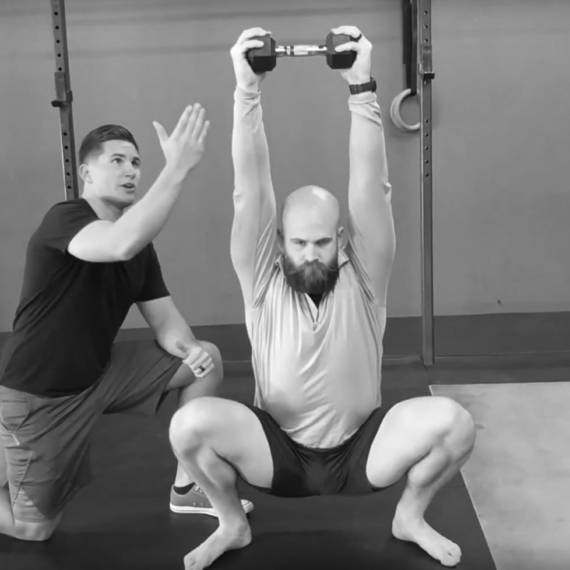What is thoracic spine mobility and why do I need it?
Before we dive into how to improve mobility in this area, we first need to know why having full thoracic spine mobility is important for both pain and performance.
Thoracic Spine Anatomy:
Without going too deep into an anatomy lesson, let’s keep it super simple. The thoracic spine (your mid back) consists of 12 vertebrae that lie between your cervical spine (neck) and your lumbar spine (lower back). This area is designed to have full mobility to flex, extend, and rotate both in sport and with daily activities.
Many people that come to see us are missing mobility in this area over time from either not using the full ranges of motion throughout their days, or from too much time spent hunched over a desk, computer, or phone.
Why Is Thoracic Spine Mobility Important?
If your thoracic spine is missing the mobility it needs to perform the above motions, then your body will find a way to accomplish the same motions from another area.
For example, if you’re so stiff through this area that you cannot rotate fully, where does the rotation come from when you are turning your body to look behind you, throwing a ball, or performing an exercise? Often times, the lower back then becomes the area of the body where the rotation comes from. The lower back is not designed to do this motion in large degrees. Not only is this bad from a performance standpoint (less power and strength), but this is also a huge cause of lower back or shoulder pain over time as these are commonly the areas that have to compensate for missing thoracic spine mobility.
How Do I Know If My Mobility Is Limited?
In our clinic we use a simple assessment to check for mobility limitations in this area. This is a movement you can try at home to see how you stack up. Check out the video below describing this assessment:
As described in the video, your target goal is for 50 degrees of motion with this test. You might need some help from someone to determine how close you are to the mark.
If you scored great on this assessment, keep doing what you’re doing. However, if you’re on the border of that 50 degrees, if you have one side that’s much more challenging, or if you’re missing the mark, try out the following 6 exercises to help improve your thoracic spine mobility. If you’re not sure where to start, the exercises are listed from the most basic to the most advanced:
Rib Grab
Open Book
Prone Active Extension
Quadruped Extension and Rotation
Lumbar Lock Extension and Rotation
Overhead Squat Thoracic Mobility
As with anything, mobility changes take consistency and time. Aim to work through these daily. If you’re consistently working on the right things, you will see improvements in your mobility.
If you’re not getting the progress you want, or you have pain or injury that you’re trying to work around, we can help. We help individuals looking to get back to the activities they love every single day, and if pain or injury is holding you back we can help you do the same.
If you’re not sure if or how we can help, click here to fill out our contact form to speak with one of our Doctors of Physical Therapy. We’ll get on the phone with you, at no charge, to see if we’re a good fit. And if we’re not, we’ll do our best to point you in the direction to get the help you need today. If you’re a remote client interested in online programming, fill out our contact form and mention that you’re interested in hearing more about our remote coaching options.
Don’t wait to live your best life, we’d love to help you reach your goals!

